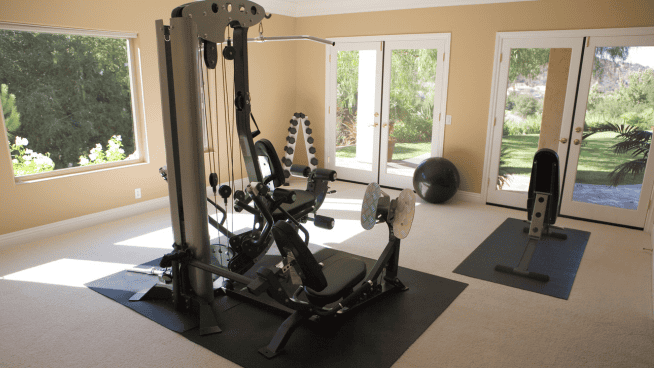How to Perfectly Pass a Soccer Ball
Passing is the pulse of soccer.
Without it, the sport would be unrecognizable.
This article (and accompanying videos) are intended to help coaches and parents of young soccer players develop basic passing skills in an appropriate and effective manner.
Even the world’s most prolific playmakers had to start by mastering the basics.
Basic Passing Technique
Basic passing technique is pretty straight-forward, as outlined in this video.
One foot will be used to strike the ball, while the other foot will be used to maintain connection with the ground. The latter is often referred to as the “plant foot.”
The plant foot should be placed right about even with the ball.
The kicking foot should swing through and contact the ball with a stiff ankle.
By “stiff ankle,” we mean that the foot should not be flimsy. Rather, it should remain relatively stable throughout contact and follow-through.
As for the contact point on the foot itself, the inside of the foot offers the most control for shorter passes.
For longer passes, the top portion of the foot (where the laces are usually located) can offer a good combination of power and accuracy.
As for where to hit on the ball, the lower you strike the ball, the more loft the ball will have.
The higher you strike on the ball, the lower the trajectory will typically be.
Players can set up anywhere from 5 to 15 yards away from one another to practice short passes.
Staying on their toes between passes can help players stay spry and engaged.
Players can start off with light-to-medium velocity and gradually work up to high-velocity passes.
A perfect pass has enough velocity to reach a player quickly, but not so much velocity that they’ll have difficulty controlling it.
To help create balanced players, they should practice an equal number of passes with both feet.
The receiving teammate should focus on “softening” the incoming pass to keep it close to their body.
Trap, Push, Pass Drill
This drill adds a bit of dynamic movement to the execution of basic passing and trapping while also adding in some light foot skills work.
Have two youth soccer players stand 10-15 yards away from one another.
Each player should have a cone a yard or two in front of them.
As player one passes to player two, player two should trap the ball, then use the outside of their foot to push it to the other side of the cone, then use that same foot to deliver a pass back to their partner.
As player two is trapping and pushing the ball, player one should “show” on the other side of the cone to receive the ball.
Repeat that same sequence with player one now trapping, pushing and passing back to player one.
Keep your ankle locked as you deliver the pass. Do not have a flimsy foot.
Once both players total 25 passes, stop and set-up so they’re now using their opposite foot to deliver the pass.
How to Loft The Ball
Sometimes, playing a ball close to the ground just doesn’t make sense.
Perhaps the intended receiver is quite a ways away, or there’s a defender (or multiple defenders in your way).
Perhaps you want to loft the ball into the box to give your teammate a chance for a header.
No matter what the reason, knowing how to loft the ball is a valuable skill for soccer players.
This video details how to play the lofted or “flighted” ball.
The technique is quite similar to a normal pass, but the contact point on the ball is very low (almost as if the foot is scooping beneath the ball) and the shoulders and chest are drawn back on contact.
Players should think of “leaning back” as they strike the ball to produce more loft.
Using the lower portion of your laces as the contact point generally allows for better leverage and loft.
Practice playing lofted balls of varying distances with both feet to become a more productive playmaker.
Controlling Balls in the Air
One thing many youth soccer players struggle with is controlling balls that arrive in the air.
Whether they’re looking to pass, shoot or settle that ball, many young players simply don’t have the timing and/or foot-eye coordination to pull it off.
The only way to improve in this area is practice.
This video details a simple “Aerial Touches” drill that can help young players get comfortable with playing balls that arrive in the air.
Begin with the two players standing 3-6 yards away from one another.
One teammate will toss an arcing ball to right around knee height.
The receiver will use the inside of their foot to make contact with the ball, keeping their ankle locked.
The goal is for the ball to direct right back at the thrower’s chest.
The thrower will catch the ball and then throw the ball towards the receiver’s opposite foot.
Once the receiver gets the hang of it, they can bounce on their toes between touches.
As the players get comfortable, the distance between them can increase.
Be sure to perform an even number of touches with both feet, with partners switching roles between sets.
A progression of this drill is to perform it 6-15 yards away from a goal and have the receiver volley the toss into the net.
READ MORE:
RECOMMENDED FOR YOU
How to Perfectly Pass a Soccer Ball
Passing is the pulse of soccer.
Without it, the sport would be unrecognizable.
This article (and accompanying videos) are intended to help coaches and parents of young soccer players develop basic passing skills in an appropriate and effective manner.
Even the world’s most prolific playmakers had to start by mastering the basics.
Basic Passing Technique
Basic passing technique is pretty straight-forward, as outlined in this video.
One foot will be used to strike the ball, while the other foot will be used to maintain connection with the ground. The latter is often referred to as the “plant foot.”
The plant foot should be placed right about even with the ball.
The kicking foot should swing through and contact the ball with a stiff ankle.
By “stiff ankle,” we mean that the foot should not be flimsy. Rather, it should remain relatively stable throughout contact and follow-through.
As for the contact point on the foot itself, the inside of the foot offers the most control for shorter passes.
For longer passes, the top portion of the foot (where the laces are usually located) can offer a good combination of power and accuracy.
As for where to hit on the ball, the lower you strike the ball, the more loft the ball will have.
The higher you strike on the ball, the lower the trajectory will typically be.
Players can set up anywhere from 5 to 15 yards away from one another to practice short passes.
Staying on their toes between passes can help players stay spry and engaged.
Players can start off with light-to-medium velocity and gradually work up to high-velocity passes.
A perfect pass has enough velocity to reach a player quickly, but not so much velocity that they’ll have difficulty controlling it.
To help create balanced players, they should practice an equal number of passes with both feet.
The receiving teammate should focus on “softening” the incoming pass to keep it close to their body.
Trap, Push, Pass Drill
This drill adds a bit of dynamic movement to the execution of basic passing and trapping while also adding in some light foot skills work.
Have two youth soccer players stand 10-15 yards away from one another.
Each player should have a cone a yard or two in front of them.
As player one passes to player two, player two should trap the ball, then use the outside of their foot to push it to the other side of the cone, then use that same foot to deliver a pass back to their partner.
As player two is trapping and pushing the ball, player one should “show” on the other side of the cone to receive the ball.
Repeat that same sequence with player one now trapping, pushing and passing back to player one.
Keep your ankle locked as you deliver the pass. Do not have a flimsy foot.
Once both players total 25 passes, stop and set-up so they’re now using their opposite foot to deliver the pass.
How to Loft The Ball
Sometimes, playing a ball close to the ground just doesn’t make sense.
Perhaps the intended receiver is quite a ways away, or there’s a defender (or multiple defenders in your way).
Perhaps you want to loft the ball into the box to give your teammate a chance for a header.
No matter what the reason, knowing how to loft the ball is a valuable skill for soccer players.
This video details how to play the lofted or “flighted” ball.
The technique is quite similar to a normal pass, but the contact point on the ball is very low (almost as if the foot is scooping beneath the ball) and the shoulders and chest are drawn back on contact.
Players should think of “leaning back” as they strike the ball to produce more loft.
Using the lower portion of your laces as the contact point generally allows for better leverage and loft.
Practice playing lofted balls of varying distances with both feet to become a more productive playmaker.
Controlling Balls in the Air
One thing many youth soccer players struggle with is controlling balls that arrive in the air.
Whether they’re looking to pass, shoot or settle that ball, many young players simply don’t have the timing and/or foot-eye coordination to pull it off.
The only way to improve in this area is practice.
This video details a simple “Aerial Touches” drill that can help young players get comfortable with playing balls that arrive in the air.
Begin with the two players standing 3-6 yards away from one another.
One teammate will toss an arcing ball to right around knee height.
The receiver will use the inside of their foot to make contact with the ball, keeping their ankle locked.
The goal is for the ball to direct right back at the thrower’s chest.
The thrower will catch the ball and then throw the ball towards the receiver’s opposite foot.
Once the receiver gets the hang of it, they can bounce on their toes between touches.
As the players get comfortable, the distance between them can increase.
Be sure to perform an even number of touches with both feet, with partners switching roles between sets.
A progression of this drill is to perform it 6-15 yards away from a goal and have the receiver volley the toss into the net.
READ MORE:










